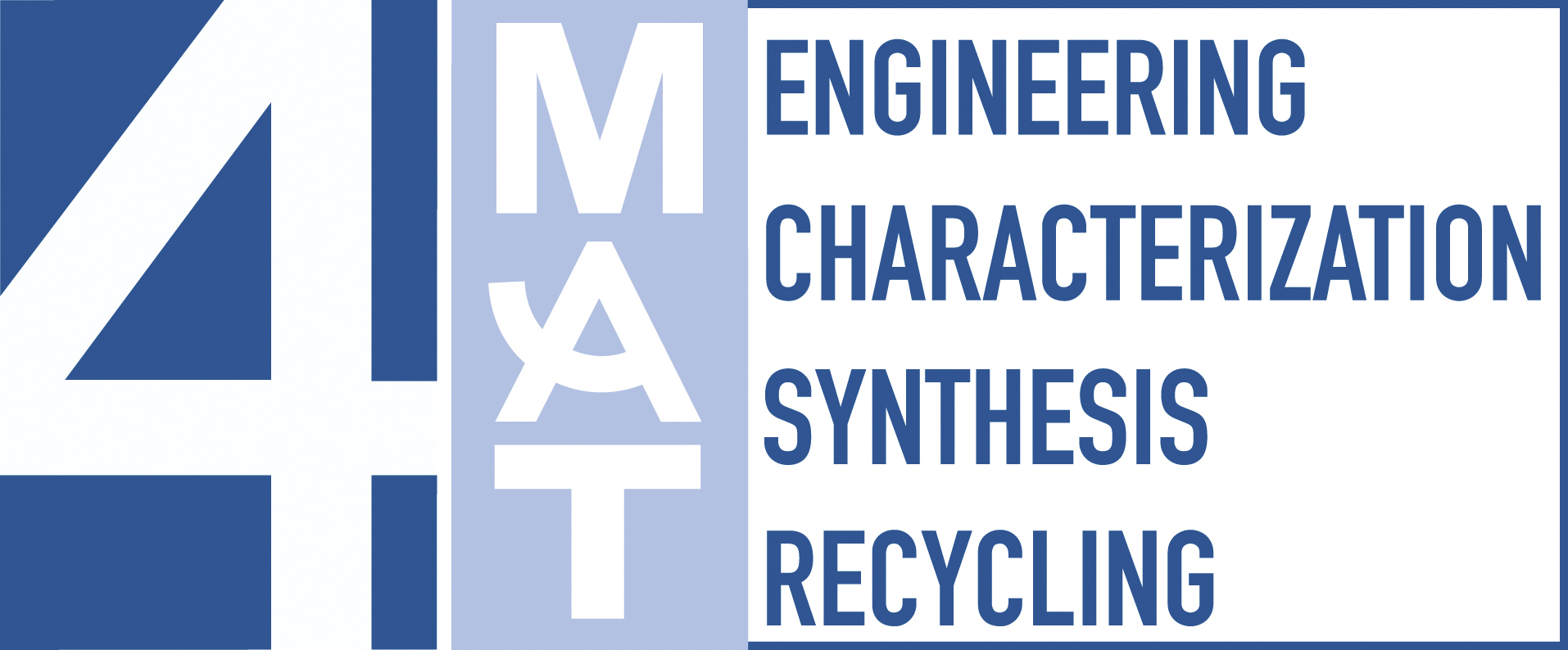In the same section
Co-Head of 4MAT Department

Ecole polytechnique de Bruxelles
Campus du Solbosch - CP 165/63
Avenue F.D. Roosevelt, 50
1050 Bruxelles
-
Biosketch
- Prakash Venkatesan joined the 4MAT department as Professeur at the Université Libre de Bruxelles on October 2020. Prakash did his PhD with a Marie Curie fellowship in the group of Metal Production and Resource Recycling (MPRR) under the supervision of Prof. Jilt Sietsma and Prof. Yongxiang Yang at Delft University of Technology in the Netherlands. His PhD was focussed on developing environmentally friendly electrochemical processes to recover rare-earth elements from NdFeB magnet waste. Subsequently, he pursued a postdoc under Prof. Arjan Molat TU Delft in the field of corrosion, adhesion and interfacial delamination. He was a recipient of Erasmus Mundus scholarship to do his MSc “Materials for Energy Storage and Conversion” at UPS Toulouse, WUT Warsaw and UPJV Amiens. His MSc thesis project “Synthesis and characterization of structured cathode materials for all solid-state Lithium-Sulphur batteries” was carried out at Robert Bosch, Stuttgart. He holds a bachelor’s degree in technology (B.Tech) in Chemical and Electrochemical engineering from Central Electrochemical Research Institute, India. At 4MAT, his primary focus is on developing environmentally friendly recycling processes to recover metals from different waste streams
-
Teaching
-
- ..
-
Publications
-
Articles dans des revues avec comité de lecture
2024
Synergetic recycling of permanent magnet and Li-ion battery cathode material for metals recovery
Borra, V. L., Jena, A., Sistla, N. S., Venkatesan, P., Önal, M. A. R., & Borra, C. R. (2024). Synergetic recycling of permanent magnet and Li-ion battery cathode material for metals recovery. Sustainable Materials and Technologies, 41, e01043. doi:10.1016/j.susmat.2024.e01043Rare earth elements (REEs)-based (NdFeB) magnets and lithium−ion batteries (LIBs) are critical for a low−carbon economy. Their production depends on critical elements like REEs, Li, Co and Ni. Recycling of these products have been explored separately as a potential solution. Conventional methods for recycling NdFeB magnets and LIBs face challenges like high energy consumption, lengthy processing, excessive reagent usage, and waste generation. In this study, a novel synergetic recycling methodology is proposed to minimize these challenges. The idea is based on using waste ferrous sulfate solution generated during magnet leaching as a reducing and leaching reagent for battery recycling thereby eliminating the need for additional reagents for oxidation of iron in NdFeB and reduction of cathode material in LIBs. The magnet is leached in diluted H2SO4 at 70 °C followed by double sulfate precipitation for REEs with Na2SO4. The REE-depleted but acidic ferrous solution is then used for reductive leaching of cathode material at 90 °C. The overall recovery rates of REEs, Li, Co, Ni, and Mn in this process are >95%. The iron from magnet material is recovered as crystalline and easily-filterable iron compound that can be converted to goethite and used as a byproduct. This synergetic approach not only reduces reagent consumption and waste generation aligning with the principles of circular economy but also offers improved efficiency, resource conservation, and environmental sustainability.
https://dipot.ulb.ac.be/dspace/bitstream/2013/376810/3/CRB1.pdfNovel routes for synthesis of rare earth oxychlorides
Borra, V. L., Challakonda, N. V. S., Jana, P., Venkatesan, P., Recai Önal, M. A., & Borra, C. R. (2024). Novel routes for synthesis of rare earth oxychlorides. Materials Today Chemistry, 38, 102098. doi:10.1016/j.mtchem.2024.102098Rare earth oxychlorides (REOCl) have received significant interest for their potential applications in chloride ion conductors, catalysts, luminescent materials due to their unique and special properties. Many synthesis methods were reported for their production including solid-state, flux-assisted, and sol-gel techniques. The present study introduces two straightforward solid state synthesis routes for synthesizing desired oxychlorides. In the first route, REOCl is prepared by roasting of a mixture of hydrous rare earth chloride (RECl3.xH2O) and rare earth oxide (RE2O3) powder. The second route involves, initial curing followed by roasting a portion of RE2O3 with hydrochloric acid (HCl) for production of the oxychlorides. For both routes, the optimal process conditions were first defined for LaOCl synthesis. Subsequently, the refined conditions of second method were successfully applied to the synthesis of NdOCl and SmOCl. The thorough mineralogical and morphological analysis of the obtained products under these conditions provides valuable insights into their characteristics and potential applications.
https://dipot.ulb.ac.be/dspace/bitstream/2013/374853/3/crb2.pdfhttps://dipot.ulb.ac.be/dspace/bitstream/2013/374853/5/crb2.pdf2023
The Effect of Mechanochemical Activation on Carbothermic Reduction of Pyrolusite Ore
Borra, C. R., Saida, S., Kar, M. K., Venkatesan, P., Singh, V., & Ӧnal, M. A. R. (2023). The Effect of Mechanochemical Activation on Carbothermic Reduction of Pyrolusite Ore. Mining, Metallurgy and Exploration, 40(1), 121-129. doi:10.1007/s42461-022-00717-7A laboratory-scale investigation of the effect of milling operation and catalyst addition (K2CO3) on the partial reduction of low-grade pyrolusite ore pellets was carried out using coke as a reductant. Thermogravimetric analysis was used to understand the correlation between milling and catalyst addition parameters with the reduction temperatures. DTG analysis of pyrolusite pellet reduction showed three distinctive peaks associated with a three-step reduction mechanism (i.e., MnO2→Mn2O3→Mn3O4→MnO). The results showed that the grinding and addition of the catalyst have a significant effect on lowering the MnO2 reduction temperature independently. But maximum reduction temperature drop is obtained when combining grinding and catalyst addition in this work. By 3 h milling and 10 wt% catalyst addition, the reduction temperatures were reduced by more than 200 °C compared to the raw ore pellets. These results obtained from the DTG analysis were further supported by XRD analysis of the reduced samples.
https://dipot.ulb.ac.be/dspace/bitstream/2013/371028/3/crb3.pdf2021
Hydrometallurgical Production of Electrolytic Manganese Dioxide (EMD) from Furnace Fines
Önal, M. A. R., Panda, L., Kopparthi, P., Singh, V., Venkatesan, P., & Borra, C. R. (2021). Hydrometallurgical Production of Electrolytic Manganese Dioxide (EMD) from Furnace Fines. Minerals, 11(7), 712. doi:10.3390/min11070712The ferromanganese (FeMn) alloy is produced through the smelting-reduction of manganese ores in submerged arc furnaces. This process generates large amounts of furnace dust that is environmentally problematic for storage. Due to its fineness and high volatile content, this furnace dust cannot be recirculated through the process, either. Conventional MnO2 production requires the pre-reduction of low-grade ores at around 900 °C to convert the manganese oxides present in the ore into their respective acid-soluble forms; however, the furnace dust is a partly reduced by-product. In this study, a hydrometallurgical route is proposed to valorize the waste dust for the production of battery-grade MnO2. By using dextrin, a cheap organic reductant, the direct and complete dissolution of the manganese in the furnace dust is possible without any need for high-temperature pre-reduction. The leachate is then purified through pH adjustment followed by direct electrowinning for electrolytic manganese dioxide (EMD) production. An overall manganese recovery rate of >90% is achieved.
https://dipot.ulb.ac.be/dspace/bitstream/2013/328445/1/doi_312089.pdf2019
Use of iron reactive anode in electrowinning of neodymium from neodymium oxide
Abbasalizadeh, A., Seetharaman, S., Venkatesan, P., Sietsma, J., & Yang, Y. (2019). Use of iron reactive anode in electrowinning of neodymium from neodymium oxide. Electrochimica acta, 310, 146-152. doi:10.1016/j.electacta.2019.03.1612018
Selective electrochemical extraction of REEs from NdFeB magnet waste at room temperature
Venkatesan, P., Vander Hoogerstraete, T., Hennebel, T., Binnemans, K., Sietsma, J., & Yang, Y. (2018). Selective electrochemical extraction of REEs from NdFeB magnet waste at room temperature. Green chemistry, 20(5), 1065-1073. doi:10.1039/C7GC03296JA closed loop room temperature electrochemical process for selective recovery of REEs from NdFeB magnet waste.
Selective Extraction of Rare-Earth Elements from NdFeB Magnets by a Room-Temperature Electrolysis Pretreatment Step
Venkatesan, P., Vander Hoogerstraete, T., Binnemans, K., Sun, Z., Sietsma, J., & Yang, Y. (2018). Selective Extraction of Rare-Earth Elements from NdFeB Magnets by a Room-Temperature Electrolysis Pretreatment Step. ACS Sustainable Chemistry and Engineering, 6(7), 9375-9382. doi:10.1021/acssuschemeng.8b01707An environmentally friendly electro-oxidative approach to recover valuable elements from NdFeB magnet waste
Venkatesan, P., Sun, Z., Sietsma, J., & Yang, Y. (2018). An environmentally friendly electro-oxidative approach to recover valuable elements from NdFeB magnet waste. Separation and purification technology, 191, 384-391. doi:10.1016/j.seppur.2017.09.053
https://dipot.ulb.ac.be/dspace/bitstream/2013/328432/1/doi_312076.pdf2017
Identification and recovery of rare-earth permanent magnets from waste electrical and electronic equipment
Lixandru, A., Venkatesan, P., Jönsson, C., Poenaru, I., Hall, B. D., Yifan, Y., Walton, A., Güth, K., Gauß, R., & Gutfleisch, O. (2017). Identification and recovery of rare-earth permanent magnets from waste electrical and electronic equipment. Waste management, 68, 482-489. doi:10.1016/j.wasman.2017.07.028Electrochemistry during efficient copper recovery from complex electronic waste using ammonia based solutions
Sun, Z., Cao, H., Venkatesan, P., Jin, W.-L., Xiao, Y., Sietsma, J., & Yang, Y. (2017). Electrochemistry during efficient copper recovery from complex electronic waste using ammonia based solutions. Frontiers of Chemical Science and Engineering, 11(3), 308-316. doi:10.1007/s11705-016-1587-xEffective treatment for electronic waste - Selective recovery of copper by combining electrochemical dissolution and deposition
Haccuria, E., Ning, P., Cao, H., Venkatesan, P., Jin, W., Yifan, Y., & Sun, Z. (2017). Effective treatment for electronic waste - Selective recovery of copper by combining electrochemical dissolution and deposition. Journal of cleaner production, 152, 150-156. doi:10.1016/j.jclepro.2017.03.112
